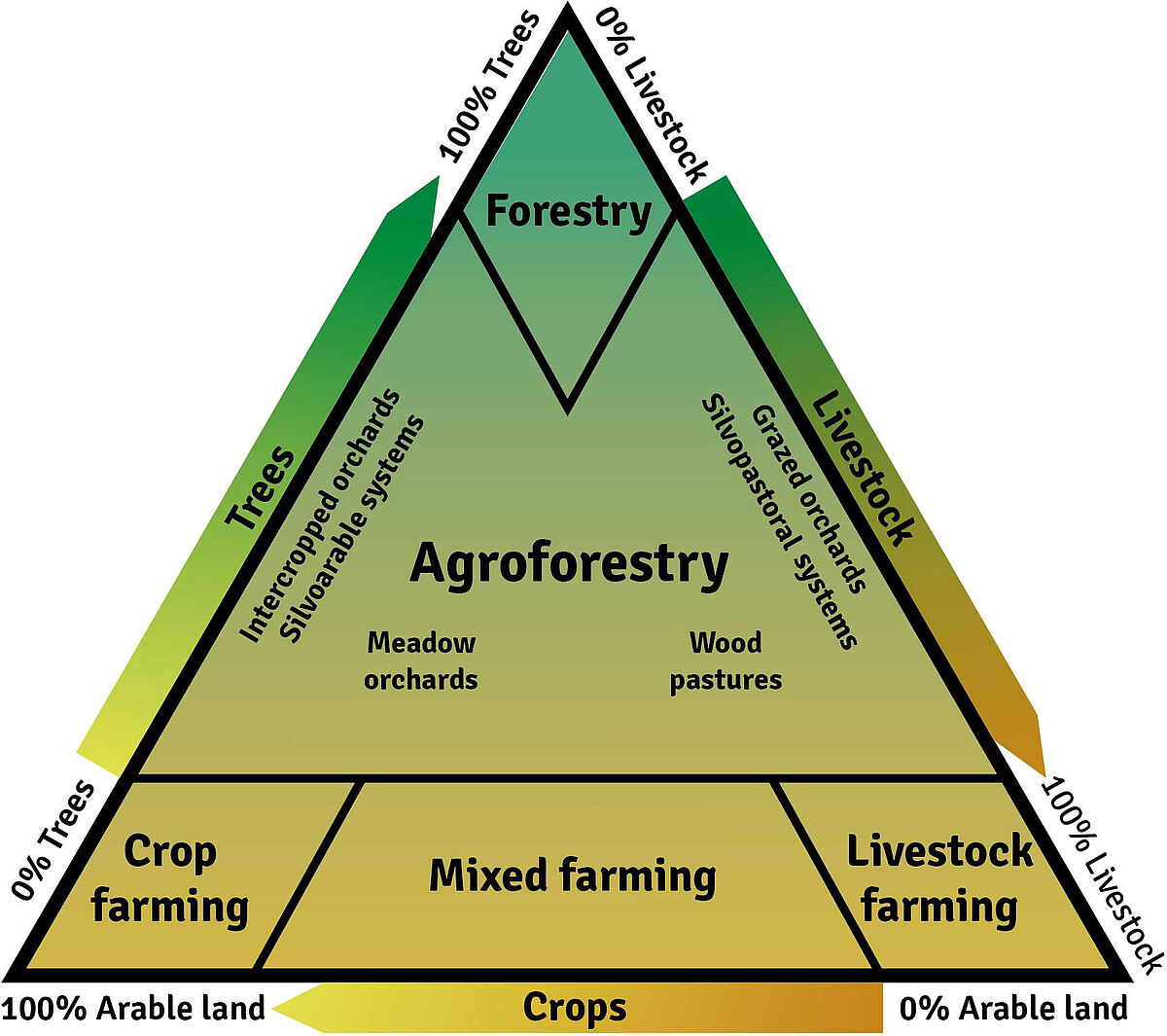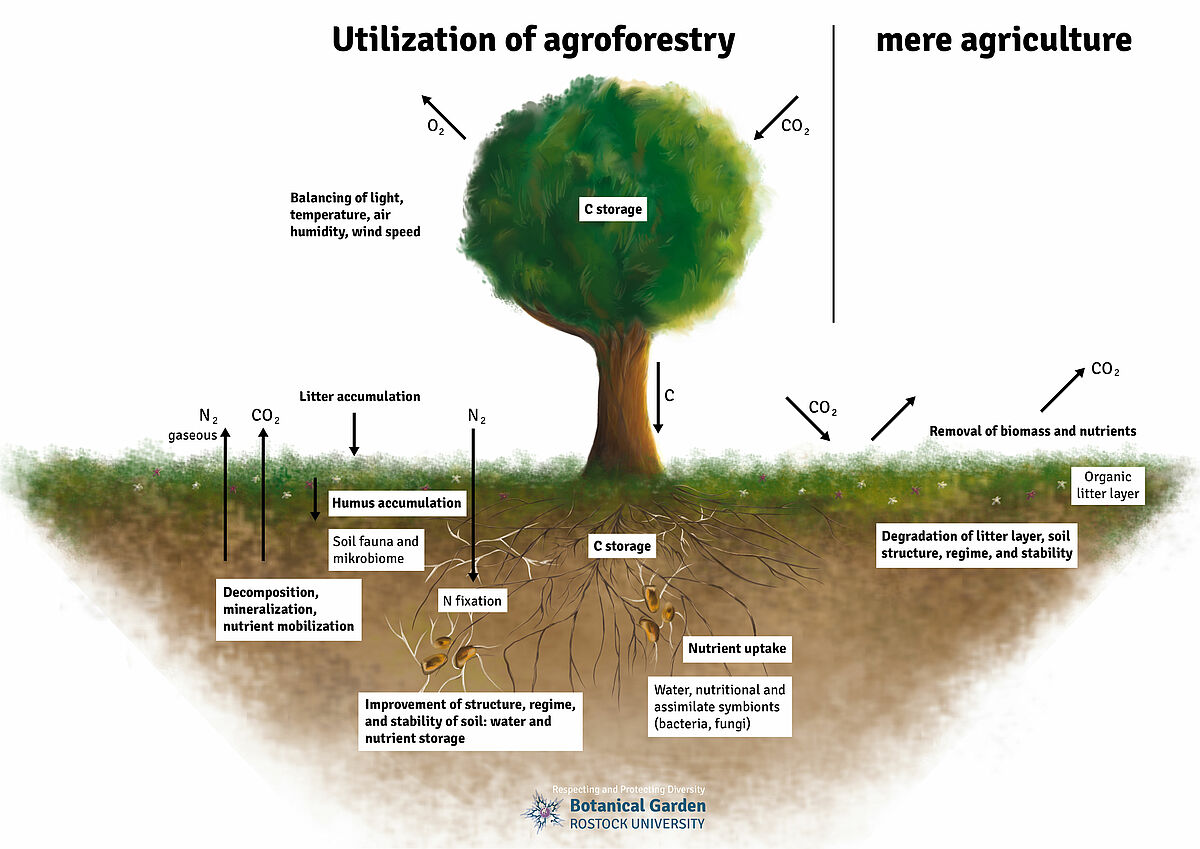Meadow Orchards and Savannas as Agroforestry Systems
Agroforestry is a system of agriculture that utilizes combinations of selected woody and herbaceous plants to produce crops in ways that are sustainable and regenerative for biodiversity and soil fertility. Around the world, agroforestry has taken many forms and is utilized in regions as different as central Europe and sub-Saharan Africa. It represents a historical example of land-use systems that do not require external inputs of fertilizers or pesticides and may provide integrated pest control. These aspects are particularly important in regions that do not have access to chemical products, or have poor soil quality (such as much of the tropics).
Agroforesters possess knowledge of important plant varieties that can be used for particular purposes, and are therefore important sources of local knowledge, which is invaluable to agronomists, biologists and conservationists committed to sustaining biodiversity. As agroforestry utilizes communities of plants rather than only a few varieties, it represents an important alternative to conventional industrialized agriculture. The inherent sustainable and regenerative capabilities of agroforestry have emerged as an important way of addressing both the decline in biodiversity and impact of climate change.
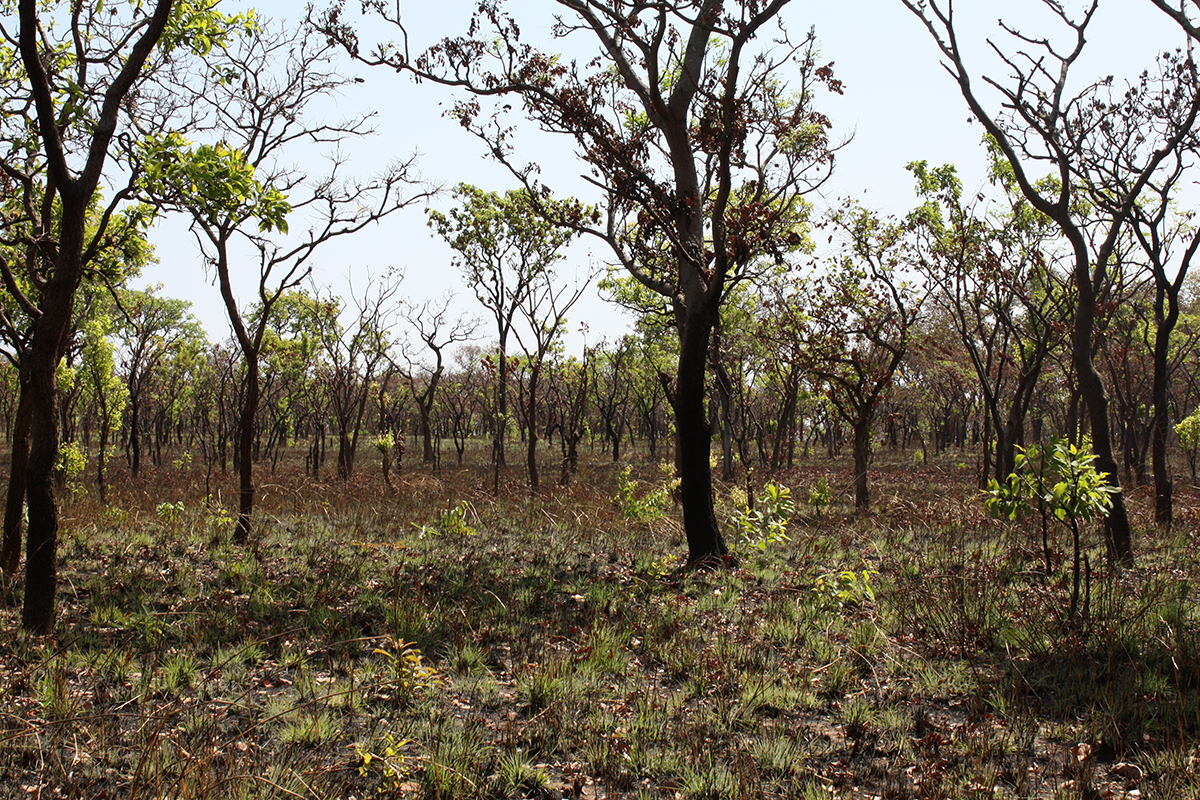
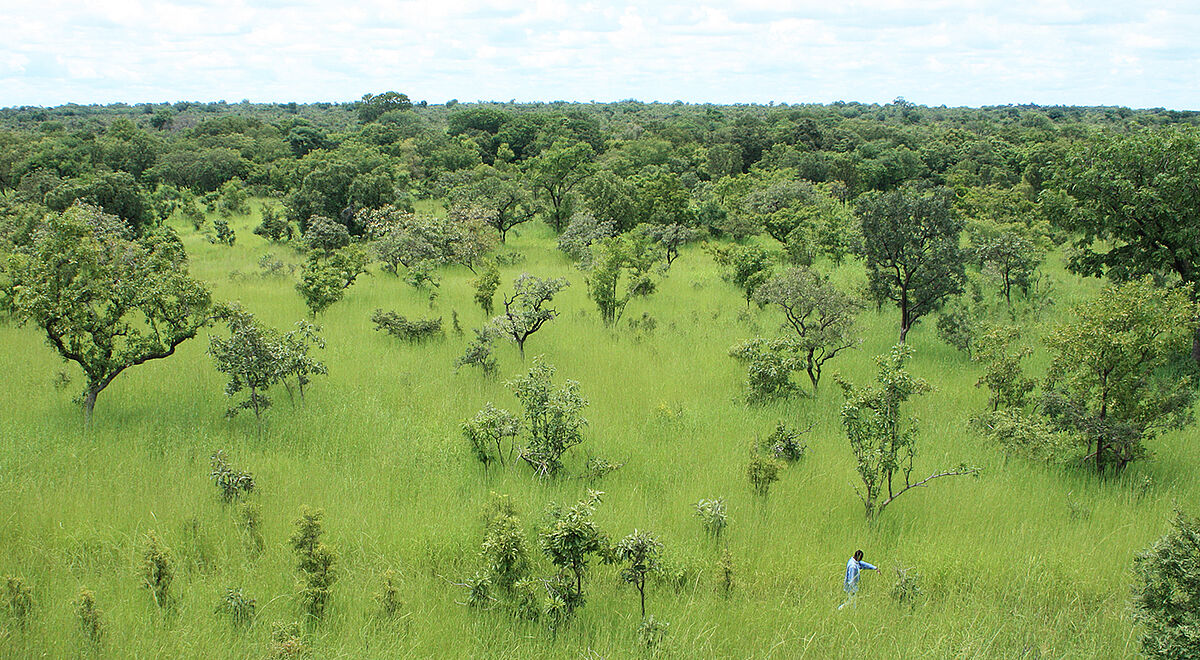
Agroforestry, i.e. the intentional combination of agriculture with forestry, is a traditional practice common throughout much of the world and has gained recent attention as a potential alternative to practices utilized by modern agriculture. At its core is the idea that woody plants such as trees and shrubs can coexist in mutually beneficial ways with agricultural crops, grassland, and livestock. Due to various interactions between woody and herbaceous plants, associated fungi, soil organisms and arthropods, agroforestry systems are typically richer in biodiversity, more resistant to harmful impacts of soil erosion and pests, and have higher levels of soil organic carbon when compared to agricultural systems. These soils help mitigate the impact of climate change by regulating local climate and sequestering carbon.
Agroforestry systems often provide socio-cultural benefits, such as creating attractive and universally appreciated landscapes that also provide sustainable economic benefits. Many of the unique landscapes around the world are in fact the result of the activity of agroforesters. Large-scale burning of the field layer and preserving or planting of selected trees in larger areas has created unique parkland landscapes that can be considered as an intermediate stage between forest and grassland and are useful also for cultural and recreational purposes.
The benefits of agroforestry are particularly relevant in contexts where modern agricultural practices are either unavailable or have been shown to have harmful impacts on human health or ecological health (e.g., on shallow soils in tropical areas or in slope positions).
While being relatively simple in principle, agroforestry systems require substantial knowledge of local woody and field crop species and how to optimize their joint benefits. Practitioners may possess detailed knowledge of hundreds of varieties of local agricultural crops and how to best utilize them in the local ecological context. This being in stark contrast to modern agricultural practices, which often focus on a few varieties of crop species uniformly cultivated across large regions.
Without traditional agroforestry, many local varieties of plant species are in the process of disappearing and many regions are experiencing rapid environmental change due to the loss of natural plant variability which is crucial for adapting to varying conditions. Systems that possess a large variety of plant species have proven to be more robust and adapted to the impacts of a changing environment. This is also related to natural pest regulation mechanisms associated with predatory or parasitic insects and fungi that are more developed in diverse environments. Conversely, modern systems that utilize only a few varieties as their staple crops may be unable to identify crops that are suitable for the changed environmental conditions—requiring increased chemical utilization and ecological damage. Therefore, agroforestry represents a traditional and historically proven natural means of creating diverse agricultural systems that are adaptive and regenerative in terms of soils, biodiversity, and the human communities that depend on them.
The potential for carbon sequestration by agroforestry has been recognized by the International Panel on Climate Change (IPCC) as an important long-term strategy to mitigate climate change. By utilizing many different plant species together, the overall carbon sequestration of agroforestry systems is far greater than of conventional agriculture. Aboveground carbon storage is significant in agroforestry systems due to the presence of considerable vegetation growth, a substantial portion of which is not removed and left to interact with the surrounding plants. The presence of trees increases the amount of carbon stored above ground as well as in the soils themselves. Tree roots grow deep into soils, far deeper than any crop root, thereby increasing the spaces in the soil where soil organic carbon accumulates. For example, European beech trees (Fagus sylvatica) store approximately 1.55 times more carbon in their root systems than they do in their shoots. Also, root-derived carbon sequestration is more likely to stabilize in the soil due to physiochemical properties than shoot-derived carbon, which is essential for the long-term sequestration of carbon.
Agroforestry has significant potential to decrease CO2 emissions if it is utilized on land that has been degraded or is currently utilized by conventional intensive agriculture. However, agroforestry can actually increase CO2 emissions if it is utilized on land that was converted from established forests. Converting forested land into agroforestry areas does not reduce overall carbon emissions, but it may be a better alternative than conventional agriculture. Studies have shown that as much as half of the carbon storing capability of land-growing natural vegetation is lost when converted into continuous agricultural production. Therefore, pastures and cropland have significant potential to act as carbon sinks if their carbon sequestration abilities are rehabilitated utilizing tree-based agroforestry systems.
The potential of agroforestry to mitigate climate extremes is significant in temperate as well as tropical climates. In temperate zones, former cropland and pastures may be converted into agroforestry systems. Incentives to do so would likely be from the environmental and cultural benefits of reestablishing traditional landscapes. In tropical zones, economic incentives alone may be sufficient to establish agroforestry, where it represents a self-sufficient means of crop production which is highly beneficial to subsistence farmers.
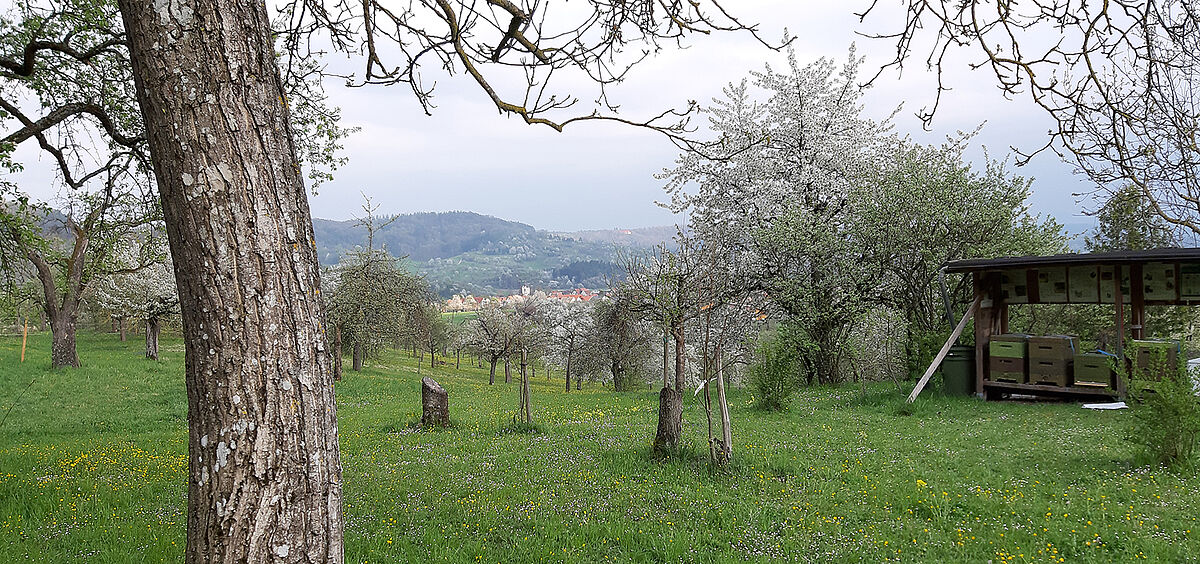
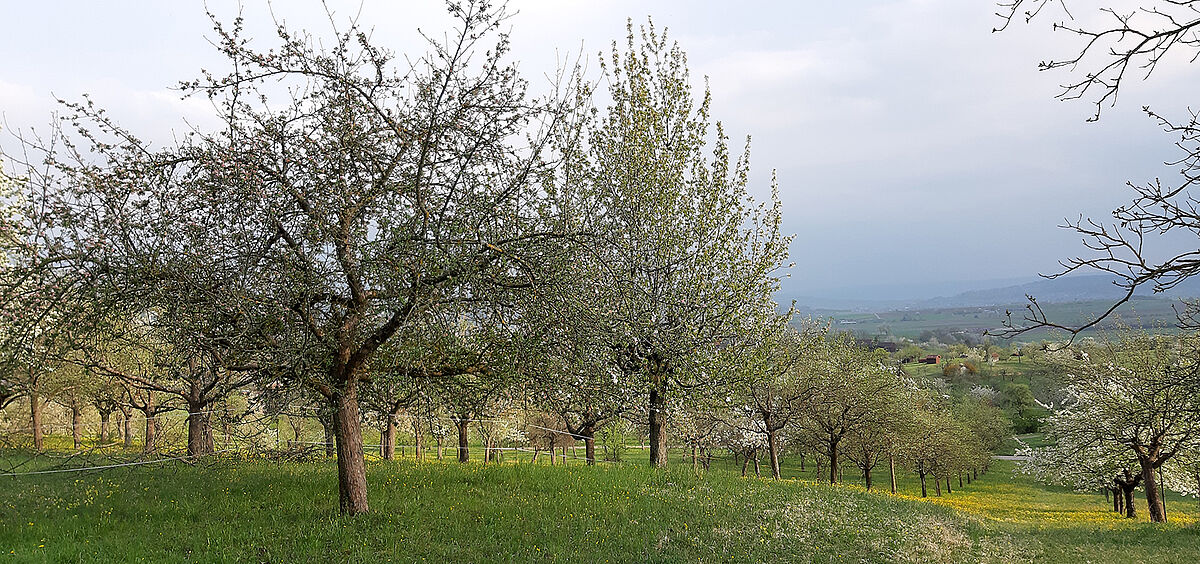
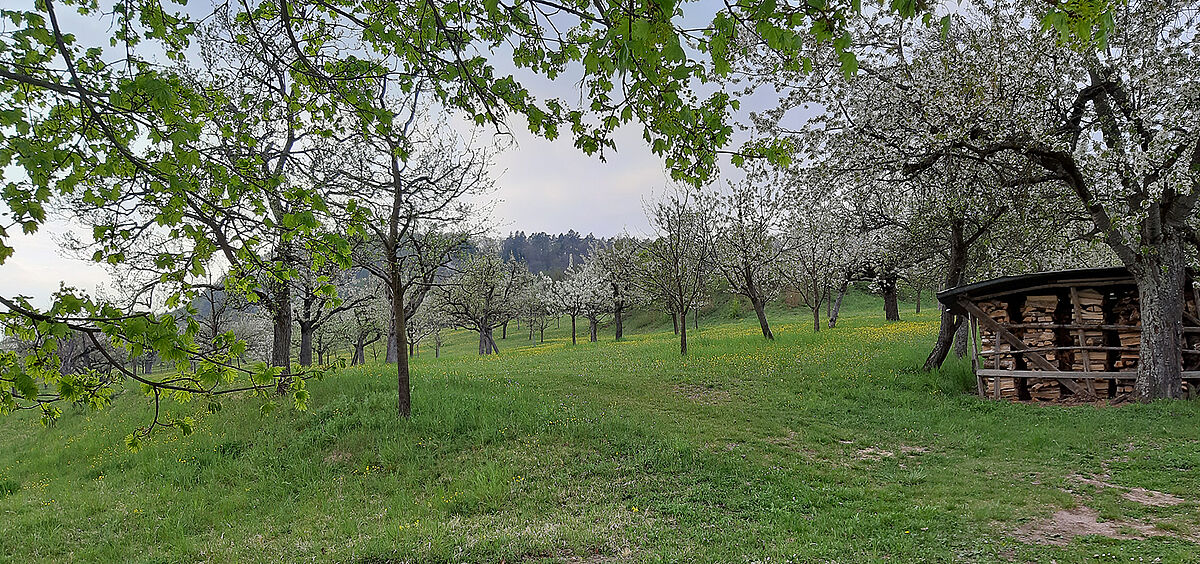
One variant of agroforestry that has gained notable attention recently is the traditional European scattered fruit tree orchard. Different orchard types are located all throughout western, central, and eastern Europe and have a long history of being associated with beautiful landscapes and fruit, crop and meat production. In Germany, fruit tree cultivation began after periods of strife that left many European communities devastated and lacking adequate food supplies. Famously, in 1752, Frederick II (the Great) of Prussia declared, “In each village, a co-operative, well furnished tree nursery must be installed and run by a man trained in the handling and nursing of trees and capable of educating the villagers. In these tree nurseries, an adequate stock of fruit trees must always be available so that, once all gardens have been planted, the planting can be extended to streets in and near the village, and if a surplus of fruit is produced, it is to be sold to the cities.” The development of tree orchards was also promoted by linking institutions such as marriage and citizenship to commitments to maintain fruit trees. Following its development in the 17th century, meadow orchards would gain prominence until finally peaking in the 1930s and eventually succumb to a period of replacement by industrial agricultural practices that sought to intensify fruit production.
The traditional German scattered fruit tree orchard is defined as a type of orchard where trees are planted in meadows and pastures at fairly low densities (20 to 100 trees per hectare) along with a developed, usually herbaceous, understory that may include a diverse array of other agricultural crops, shrubs and grasses. Trees are planted at different elevations and slopes, and often are not set in any particular arrangement or pattern ("scattered"). The system is well suited for all elevation levels from lowlands to sometimes higher montane altitudes in somewhat sheltered slope positions where at night cold air flows further downslope and thus would not cause frost damage to the trees. Due to shallowness and higher erosion of soils on the frequent slope positions, the surrounding understory has often been used as meadow or pasture, turning it into meadow orchards that in parts still exist today. While the fruit trees are not intensively maintained, the surrounding understory is managed according to meadow or pasture standards, the latter with various species of non-browsing livestock. Today, uncollected fruit, tree litter and the natural diversity of the understory contribute to improving soil conditions and enhancing species richness.
The varied collection of trees in tree orchard systems promotes biodiversity of plants and animals. In fact, scattered fruit tree orchards have been recognized as a significant repository of plant diversity with Germany alone containing 14,000 varieties of apples and 1,500 varieties of pears, cherries, and walnuts—the vast majority of which are found only in tree orchards. In addition, they promote significant animal diversity by providing resources to small mammals, birds, reptiles, amphibians, and arthropods. Studies have revealed that arthropod biomass is 2.5 to 7 times greater in scattered fruit tree orchards than in nearby forests. Tree orchards provide habitats for several bird species such as the red-backed shrike (Lanius collurio), the Eurasian wryneck (Jynx torquilla), and hoopoe (Upupa epops) whose populations are declining, threatened, or endangered. The diverse range of site conditions found within scattered fruit tree orchards, related to different horizontal layers (soil, moss, herbal, and tree), clearance cairns, slope expositions and elevations, provides numerous habitats for organisms to live in. Many of the distinctive varieties of fruit trees that exist in tree orchards have developed because of these unique conditions.
Recently, interest in meadow orchards has been on the rise due to their unique socio-cultural, ecological, and economic benefits. While being less productive than industrial orchards, meadow orchards provide a host of other benefits which may incentivize human communities to maintain or expand them. Many of the unique and universally recognized landscapes within Europe are in fact fruit tree orchards. Therefore, they represent a model of sustainable agriculture that may provide a wide range of economic, ecological and cultural benefits.
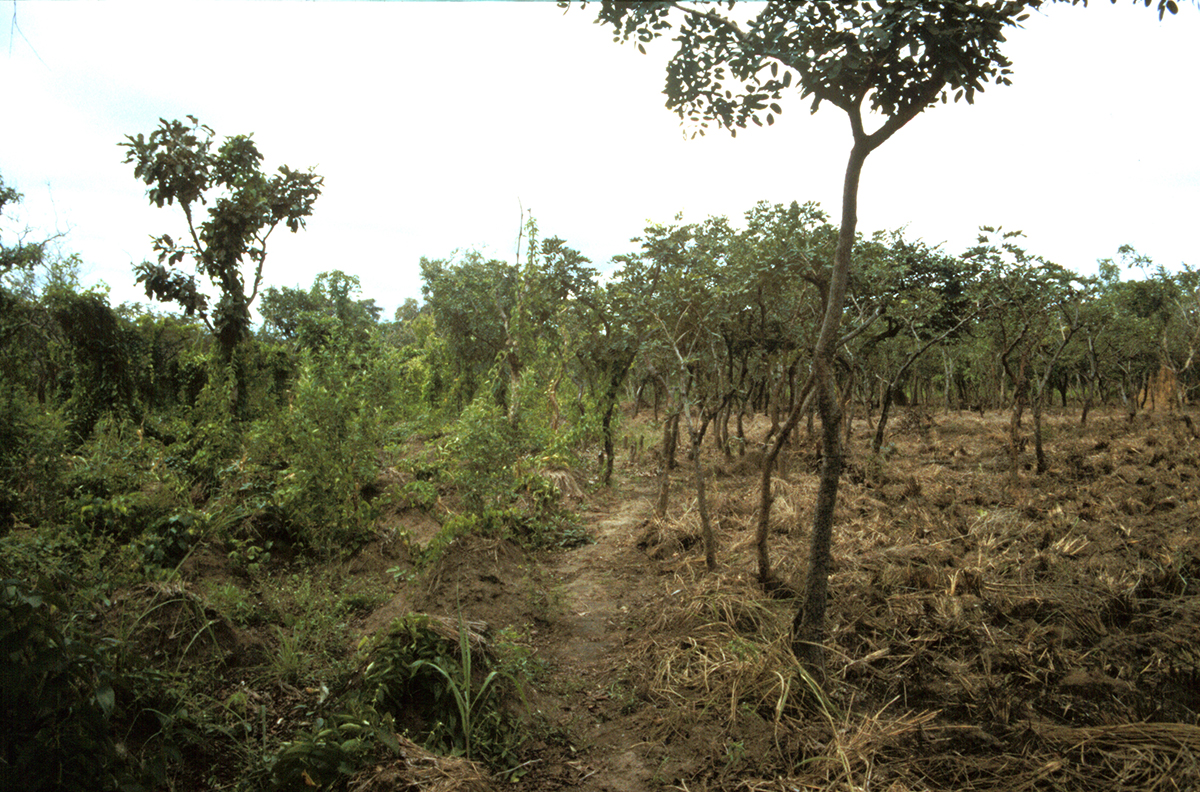
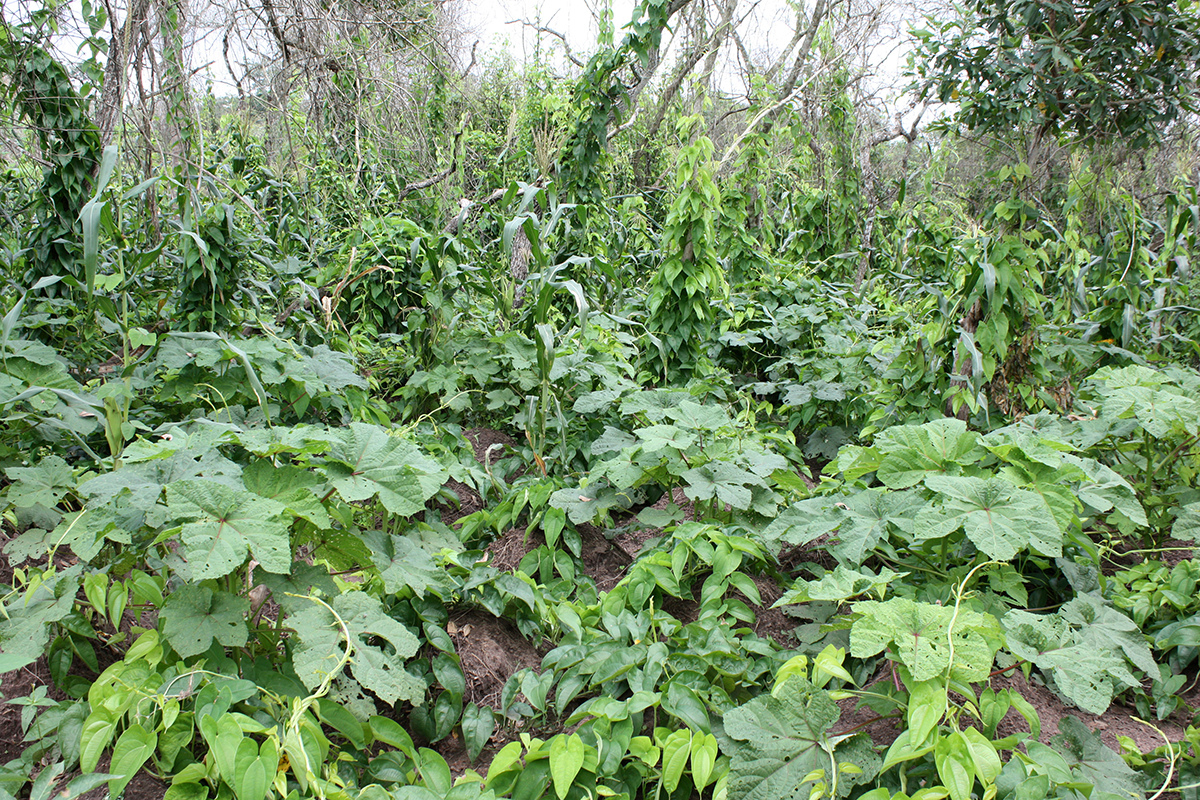
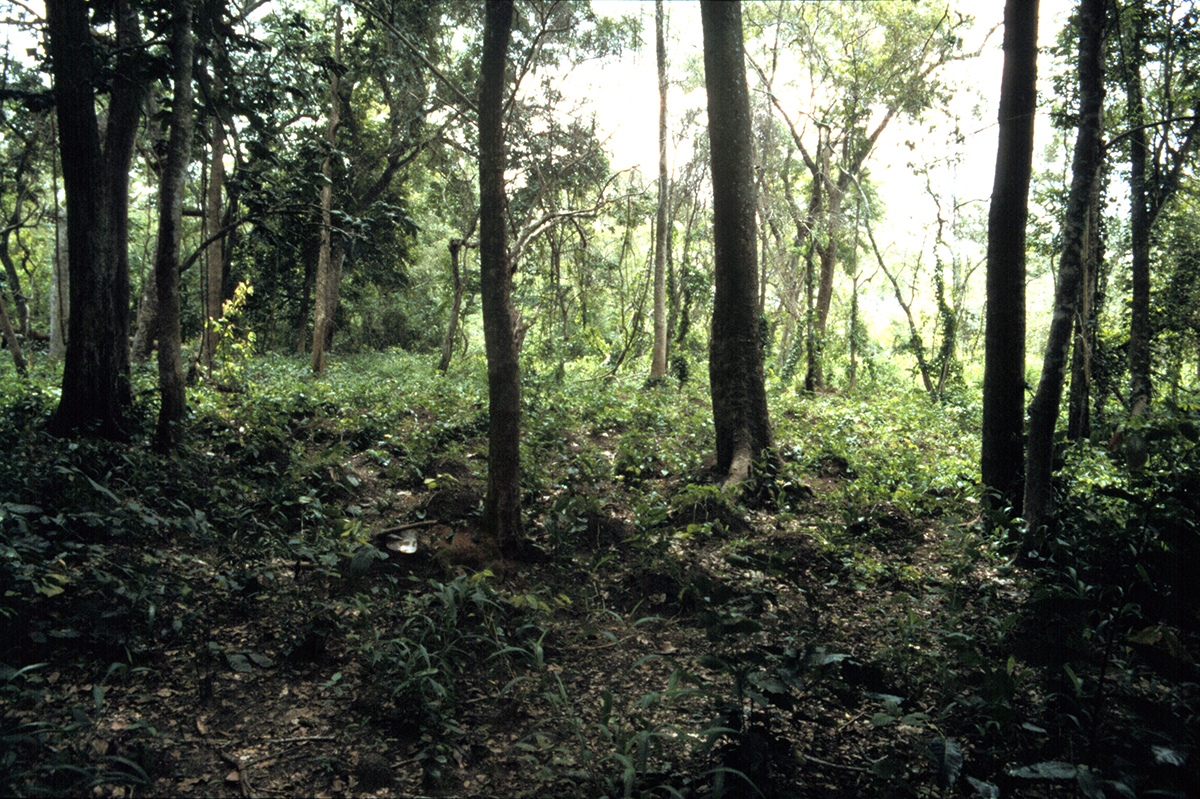
Another variant of agroforestry is the practice of shifting cultivation, which has been utilized in many countries in sub-Saharan Africa for thousands of years—but also in other parts of the world such as Europe. Trees and shrubs, which are native to original savanna woodland or rainforest and nitrogen-fixing or otherwise nitrogen-enhancing, are combined with multiple crops and grasses that have been selected for their beneficial qualities. This practice of subsistence farming is traditionally divided into cultivation and fallow periods, with cultivation shifting between field plots of various fallow stages according to a long rotation cycle. During the fallow period, fields are left in an unmanaged state for at least ten to twenty years. The natural savanna or forest vegetation regenerates and serves to replenish and enhance soil fertility and re-establish local biodiversity. At the beginning of the cultivation period, selected larger trees and bushes are cut down and the remaining field is burned allowing the ash to instantly enhance soil fertility. For one to three years, fields are then intercropped with traditional West African staple crops (such as yam, sweet potatoes, cassava, maize, and sorghum) in between the native trees and shrubs that have been left in the field. By growing plants together in this manner, shifting cultivators utilize communities of plants in order to improve growing conditions for their crops and also benefit from the crops produced by the selected woody species.
As the sub-Saharan land surface has remained basically unchanged for several million years, it is typically very low in fertility and water retention. Yet, shifting cultivation has been sustainable due to short cultivation and long fallow periods without applying any external input of synthetic fertilizers or pesticides. Fields are maintained in an intermediate savanna-like state between woodland and grassland, therefore promoting numerous habitats for a diverse range of flora and fauna to live in. This intermediate state also creates classic West African savanna landscapes, which are frequently believed to be natural, but in fact would not exist without shifting cultivation. Without the clearing of growth and burning cycles, the natural vegetation would eventually take over and return the land to a mostly woodland state. Or if trees were entirely removed and only a few crops were used, the land would become grassland. The unique savanna-like parkland landscape created by shifting cultivators has important socio-cultural implications. For example, areas that are heavily forested may be difficult to travel through and hunt for the large animals. However this savanna landscape comprises environments that are easy for humans and animals to pass through and still provides economic and ecological benefits to the local population.
Due to shifting cultivation’s significant fallow periods, substantial land is required in order to sustain this practice. On the other hand, the burgeoning population in West Africa and the increasing demand for food and fire wood has lead to increasing pressure on farmers to raise outputs and thus intensify their farming activities. Intensification in the short term can be accomplished by shortening the fallow period; however this results in an unsustainable utilization of soil nutrients. In fact, as much as 40% of the arable land in sub-Saharan Africa is currently experiencing some form of nutrient depletion from historical levels, causing farmers to resort to alternatives to maintain agricultural productivity. These activities may be far less sustainable or far more expensive, such as utilizing synthetic fertilizers or practices that involve damaging soils and increasing the potential of soil erosion. Faced with these alternatives, many shifting cultivators have abandoned their farms and migrated to cities. Therefore, the loss of the viability of shifting cultivation in many regions is a leading cause of Africa’s increasing rate of urbanization.
Addressing food security issues has been recognized as one of the most important issues facing the entire African continent. The loss of shifting cultivation as a viable agricultural practice threatens the existence of unique landscapes that have many socio-cultural benefits, but also biodiversity, and the economic wellbeing of many African farmers. Solutions include educating the population on the benefits of shifting cultivation, giving additional land rights to farmers—which have been shown to increase the chances that they will utilize their land sustainably and not migrate to new areas, and curbing the population growth of the region to create more stable conditions.
While there are many similarities between most agroforestry systems, substantial differences also exist. Systems may utilize different means to obtain soil fertility, such as having fallow periods or nitrogen-fixing plants (such as legumes, beans, and clover). Cultivation may be a continuous practice, such as it is in meadow orchards, which have a continuous output of fruit, hay and fodder, or be delayed and offset to be timed with optimal fertility and growing conditions during field rotation cycles, as it is the case in savanna systems.
The degree of required labor may be substantially different between agroforestry systems. Meadow orchards, for example, require a relatively small amount of annual human attention, whereas shifting cultivation requires significantly more activity during the beginning of cultivation, but no activity during the fallow period.
Agroforestry systems differ in their usage of fire or other means of preparing land for cultivation. Fire is often used because of the low level of labor required to clear large fields in preparation for cultivation, but it may be used in combination or not at all with other techniques to remove unwanted vegetation—sometimes entailing quite varying response by the naturally accompanying flora. Different soil conditions, elevations, and slopes may all change the optimal agroforestry system especially between meadow orchard locations. Therefore, cultivators need to possess unique knowledge for how to address these different site conditions in each single case.
Drechsel, P., Gyiele, L., Kunze, D., & Cofie, O. (2001). Population density, soil nutrient depletion, and economic growth in sub-Saharan Africa. Ecological economics, 38(2), 251–258.
FAO (1984). Changes in Shifting Cultivation in Africa. FAO Forestry Paper No. 50. FAO, Rome.
Herzog, F. (1998). Streuobst: a traditional agroforestry system as a model for agroforestry development in temperate Europe. Agroforestry systems, 42(1), 61–80.
Koulibaly, A., Goetze, D., Porembski, S. & Traoré, D. (2010). Agroforestry in different ecoclimatic zones of Côte d´Ivoire. In: Konaté, S. & Kampmann, D. (eds): Biodiversity Atlas of West Africa, Vol. III: 360–361.
Koulibaly, A., Traoré, D. & Goetze, D. (2010). Cacao and plant diversity. In: Konaté, S. & Kampmann, D. (eds): Biodiversity Atlas of West Africa, Vol. III: 418–425.
Kuyah, E. (2019). Agroforestry delivers a win-win solution for ecosystem services in sub-Saharan Africa. A meta-analysis. Agronomy for Sustainable Development, 39(5), 47.
Lorenz, K., & Lal, R. (2014). Soil organic carbon sequestration in agroforestry systems. A review. Agronomy for Sustainable Development, 34(2), 443–454.
Raintree, J. B., & Warner, K. (1986). Agroforestry pathways for the intensification of shifting cultivation. Agroforestry systems, 4(1), 39–54.
Ramachandran Nair, P. K., Mohan Kumar, B., & Nair, V. D. (2009). Agroforestry as a strategy for carbon sequestration. Journal of plant nutrition and soil science, 172(1), 10–23.
Sinsin, B., Kampmann, D., Thiombiano, A., & Konaté, S. (2010). Biodiversity Atlas of West Africa: Benin. Cotonou & Frankfurt/Main.
Tully, Katherine, et al. (2015). The state of soil degradation in sub-Saharan Africa: Baselines, trajectories, and solutions. Sustainability, 7.6, 6523–6552.
Wezel, A., & Haigis, J. (2002). Fallow cultivation system and farmers' resource management in Niger, West Africa. Land Degradation & Development, 13(3), 221–231.
Text: Toby Weisenhaus, Dr. Dethardt Goetze


